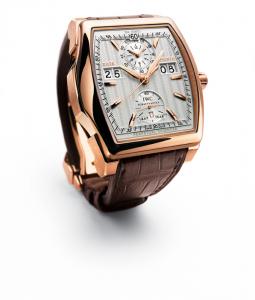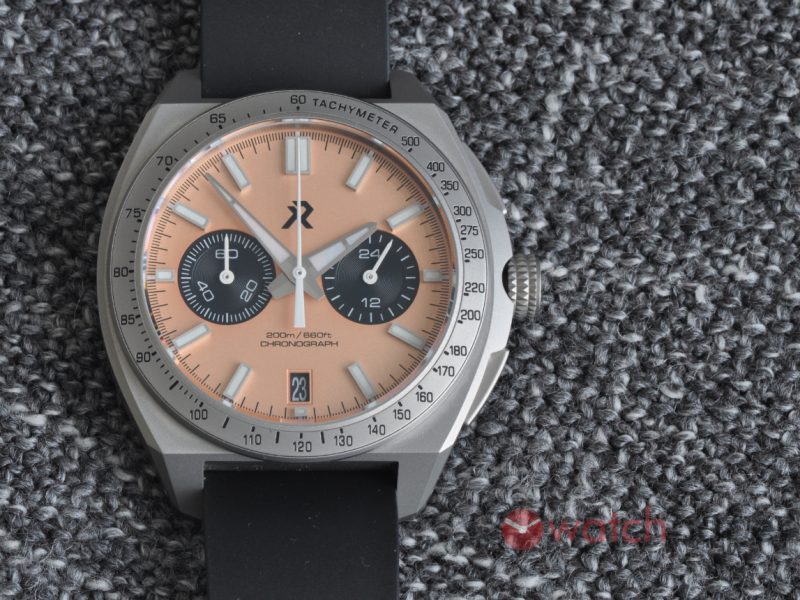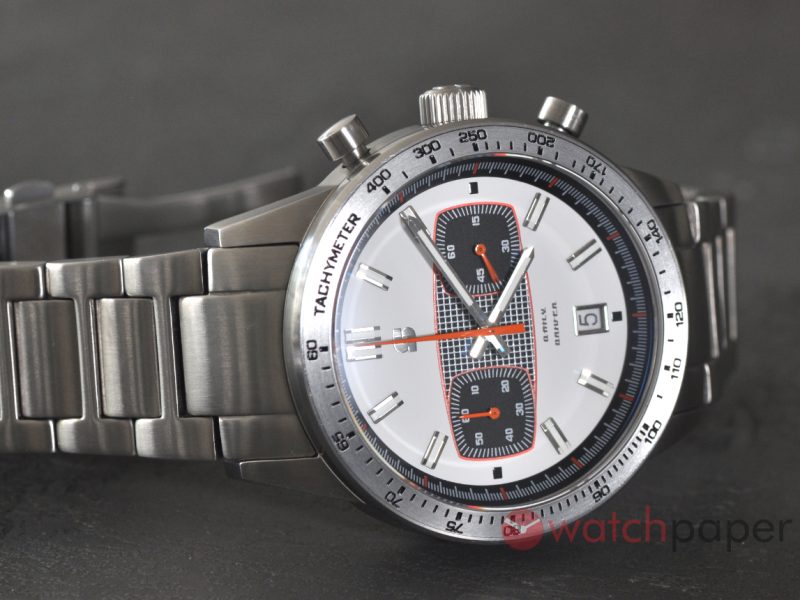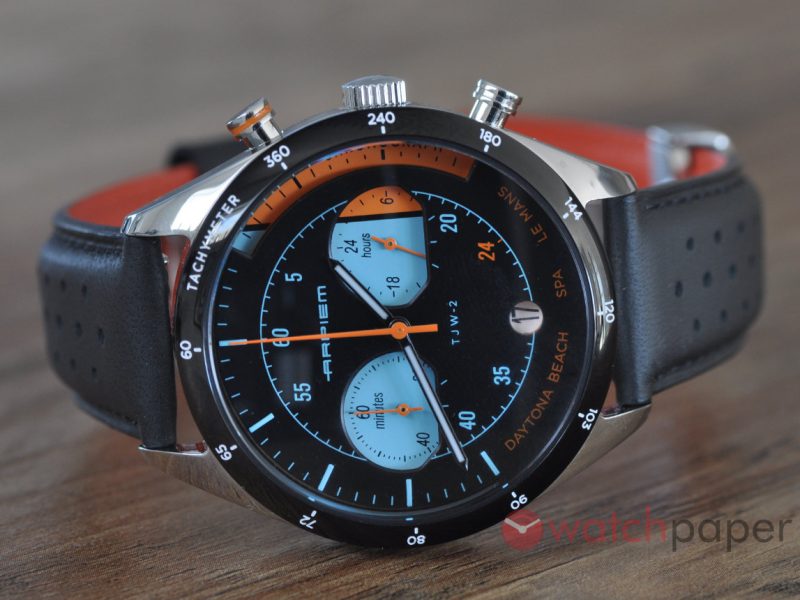With IWC, Da Vinci arrives in the digital age
Da Vinci Perpetual Calendar Digital Date-Month
The latest model in the Da Vinci collection is another milestone in haute horlogerie: its digital displays make not just every day, but every month too, into a significant event. Its flyback chronograph sets the standard. This watch harks back to the earliest digitaldisplay timepieces from Schaffhausen of
more than a hundred years ago. The name remains a watchword: in its tonneau shaped case, the Da Vinci Perpetual Calendar Digital Date-Month continues the proud tradition of the calendar chronograph with which IWC Schaffhausen played a decisive role in heralding the renaissance of the mechanical watch in 1985.
Not with big letters but with big numerals: for the first time ever, an IWC timepiece with a perpetual calendar that has a large format date display, and also turns the correct changing of the month into a large scale digital event on the dial. The watchmaker’s ingenuity was required yet again in order to showcase the two main ca lendar indications in such a prominent fashion. However, the Schaffhausen manufactory is known worldwide for solving difficult mechanical problems – and it is not completely unfamiliar with digital displays, either.
To put this into historical perspective, we have to go back 125 years in the company’s history. That was the start of the licensing agreement between inventor Josef Pallweber from Salzburg and IWC in Schaffhausen, opening up an important chapter in the story of watchmaking. However, IWC pocket watches with a digital time display were only a short-lived phenomenon, and the new Da Vinci model follows only indirectly in the footsteps of the “Pallweber watches”, which are now highly prized collectors’ items.
For it does not digitally display the time but rather the date and month of its mechanically programmed calendar – innovative, highly practical and, above all, clear and easy to read. Two years after the Da Vinci in its tonneau shaped case made its mark with the new IWC chronograph as a complication, this new model adds a major supplementary function to the existing Da Vinci range. For in addition to the chronograph and also the perpetual calendar, it now has a large format date and month shown in digital form, plus a digital display of the four yearly leap year cycle. The Da Vinci has arrived in the digital age.
As the name of the watch says, the calendar is programmed for perpetuity. However, owners of the new Da Vinci model need to understand the special rules governing leap years under the Gregorian calendar. Every fourth year is, of course, a leap year. Each hundredth year is not a leap year unless it is divisible by 400. For owners of the watch, this means that it has to be advanced by one day only once every 100 years, with the exception of years divisible by 400. After advancing the date by one day on 1 March 2100, its owners need not adjust the calendar again for another 100 years.
In months that have fewer than 31 days the calendar also changes automatically by one nonexistent day – or at the end of February in nonleap years by three days – to the first of the next month. At the same time, the two-digit month display (01–12) is moved forwards. This is consistent with the way in which the month is now normally written. The mechanically programmed autonomous mechanism is a special feature of the Schaffhausen made watch, named after Italy’s Renaissance genius. It is, after all, to him that we owe many of today’s practical applications of mechanics.
Mechanical power reserve ensures reliable switching
The switching operations at the end of each month use up a lot of power, synchronously moving two disc mechanisms (and three at the end of the year). The IWC designers wanted to ensure that the IWC manufactured 89800 calibre movement would provide reliable switching over the whole power reserve period without any perceptible loss of amplitude. Thus for the Da Vinci Perpetual Calendar Digital Date-Month they designed an instantaneous jumping date indication to carry out this function. This is done by means of a separate mechanical power reserve: throughout the month, a tiny amount of the energy used to change the date each night is diverted and stored. This energy is discharged precisely when it is required: when, at the end of the month, the month disc has to be moved forwards in addition to the date. Through this clever design the watch can now enter the digital age with two extra large calendar displays.
In technical terms – briefly – the date interlocking wheel that turns once each month is fitted with a spiral cam, on which is positioned the additional switch lever. Every night, the cam raises the switch lever a fraction higher, until at the end of the month it reaches its maximum position. At the end of the month, the switch lever on the cam of the date interlocking wheel drops from its highest position down, via a step, to the “beginning” of the month. This activates the stored energy of the “jumping indication”, which is transmitted to the programme wheels of the month display. A ratchet mechanism ensures that only one month is advanced each time.
Like its famous predecessor, the new timepiece in the Da Vinci family remains true to the principle of providing functions that are practical, ideal for everyday use and easy to operate. It begins with the new IWC manufactured 89800 calibre movement, a precision mechanical movement with the IWC double-pawl automatic winding system for the most effective automatic winding. It continues with the integral shock absorber of the spring-mounted rotor. The integral flyback chronograph with column wheel switching for easy, precision operation shows stop times of more than one minute on a single dial in normal analogue style – it’s like having a second time display. Aggregate times have never been so easy to read off. The movement of the watch is designed so that the stopwatch function can run continuously with no perceptible effect on the accuracy. Even with its calendar indications, the dial remains clear and easy to read.
The case of the Da Vinci Perpetual Calendar Digital Date-Month is a modern interpretation of the classic tonneau shaped design, and measures 44 mm/52.8 mm, with a case height of 16.3 mm. The watch is water-resistant to 3 bar, and the convex sapphire glass is antireflective on both sides. It is available both in rose gold and in platinum – the latter limited to 500 pieces.
Both variants have silver-plated dials and rhodium-plated or gold-plated hands and indices.
A modern calendar chronograph, it is a worthy successor to the Schaffhausen “time machine” that brought the complicated mechanical watch back into favour in 1985.





